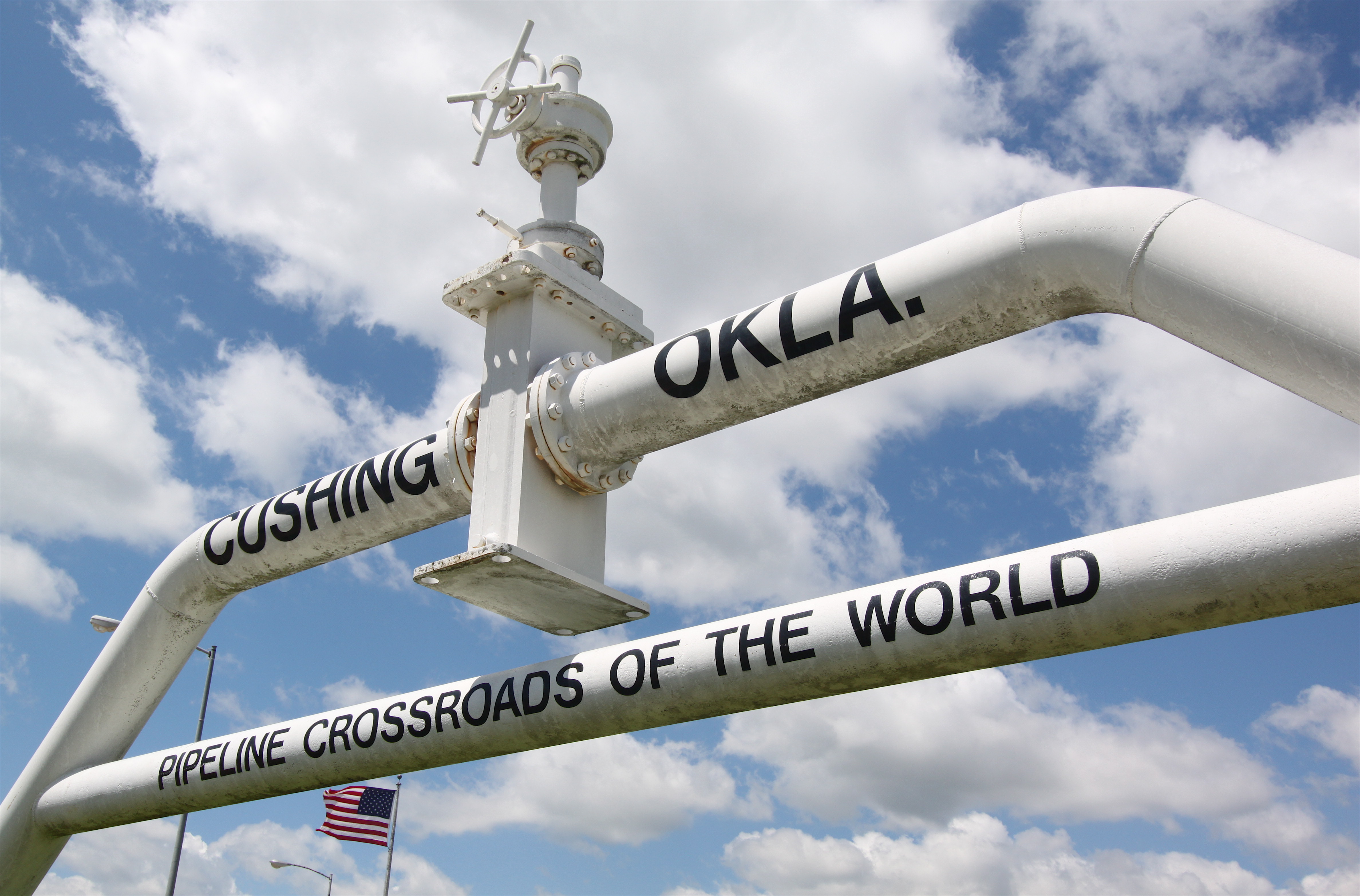Cushing Oil Hub's Low Levels Spur Quality, Operational, Price Worries
HOUSTON (Reuters) — U.S. crude stockpiles at the key Cushing, Oklahoma, storage hub are at their lowest in 14 months due to strong refining and export demand, prompting concerns about the quality of the remaining oil and the potential to fall below minimum operating levels, traders and analysts said.
Further drawdowns at Cushing, the delivery point for U.S. crude futures, could also provide new upward pressure on oil markets as it would compound supply tightness stemming from OPEC+ supply cuts. Brent crude LCOc1was already trading near $94 a barrel on Tuesday on strong global demand, while West Texas Intermediate crude futures (WTI) CLc1 traded over $90.
"Cushing inventory levels that are flirting near historical lows are driving WTI prices higher in an already tight market," said Rohit Rathod, market analyst at energy researcher Vortexa.
Cushing is strategically located to pull in barrels from top U.S. shale fields and Canada, while its hundreds of tanks are tied to pipelines that supply U.S. mid-continent and southern refineries and funnel oil to Gulf Coast export ports.
Since hitting a two-year high in June of over 43 million barrels, Cushing's levels have tumbled to just under 23 million barrels by Sept. 15, the lowest since July 2022, according to government data.
Analysts expect as much as a 1 million-barrel draw in the week to Sept. 22, based on drone monitoring. That would be the majority of an expected 1.7 million-barrel draw in total U.S. crude stocks, according to a Reuters poll.
Tank storage of below 20 million barrels, or between 10% and 20% of Cushing's over 98 million barrels of capacity, is considered close to operational low, say traders. Below those levels the oil is difficult to remove.
"If you let the crude (level) drop too low, the crude can get sludgy and you can't get it out. What does come out - you won't be able to use," said Carl Larry, a sales director at energy consultants Wood Mackenzie.
Water and sediments often settle at the base of storage tanks, making the crude oil at the bottom unable to meet quality standards for refiners or exporters.
Some tanks have outlets at the bottom that can be used to empty oil and sludge completely, while others do not and therefore the oil at the base cannot be removed completely. At lower levels, it becomes more expensive for companies to get the remaining crude out of the tanks.
Roofs of storage tanks also float on the oil, preventing vapors from building up or escaping into the atmosphere. When the legs of these roofs touch the base, it creates a gap between the oil and the roof, causing combustible vapors to form.
Can Stocks Rebuild?
Strong refining demand, rising crude exports and future prices that have been weaker than spot prices have drained Cushing's tank farms. High interest rates also have pushed up the costs for storing oil, encouraging outflows.
Some analysts reckon refineries' seasonal autumn maintenance will help build crude stocks a bit, but others warn that refiners are likely to exit maintenance quickly and run full bore to keep up with high fuel demand.
Planned maintenance is going to peak in mid-October and cut refinery crude intake by some 1.8 million barrels per day, greater than last year's fall maintenance peak of 1.5 million bpd, said Hillary Stevenson, a senior director at IIR Energy.
Typically, when Cushing inventories drop, relative prices at the hub increase to attract barrels from the Permian and limit outflows to the Gulf Coast, said Lee Williams, a senior analyst at Wood Mackenzie.
Alternatively, pipeline or storage terminal operators may limit outflows for operational purposes as inventories near the floor, said Williams.
In 2014, the last time Cushing levels fell below 20 million barrels, any major consequences were avoided as stocks quickly rebuilt due to prices rising at the hub. Also, the U.S. was not a crude oil exporter then due to a 40-year export ban which was only lifted in 2015.
Now with high export demand, market participants worry that draws at Cushing will continue.
"The world is hungry for crude," said Ernie Barsamian, CEO of the Tank Tiger, a U.S. terminal storage clearinghouse. "Any incremental production will get exported."
Related News
Related News

- Keystone Oil Pipeline Resumes Operations After Temporary Shutdown
- Freeport LNG Plant Runs Near Zero Consumption for Fifth Day
- Biden Administration Buys Oil for Emergency Reserve Above Target Price
- Mexico Seizes Air Liquide's Hydrogen Plant at Pemex Refinery
- Enbridge to Invest $500 Million in Pipeline Assets, Including Expansion of 850-Mile Gray Oak Pipeline





Comments